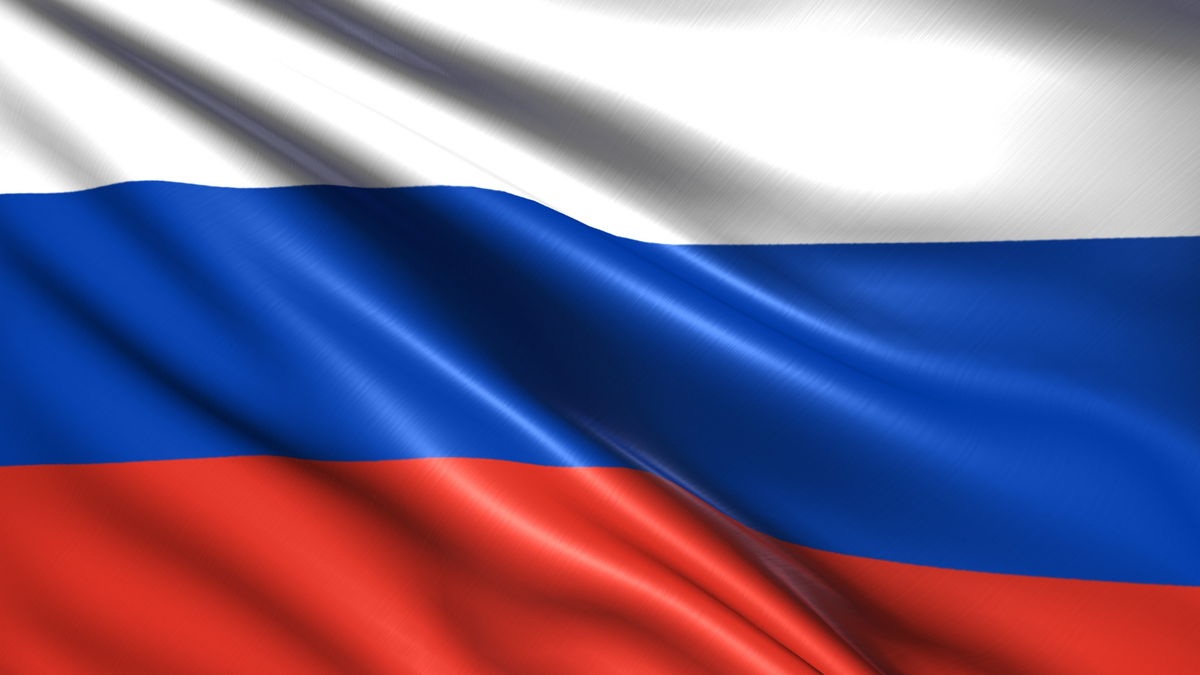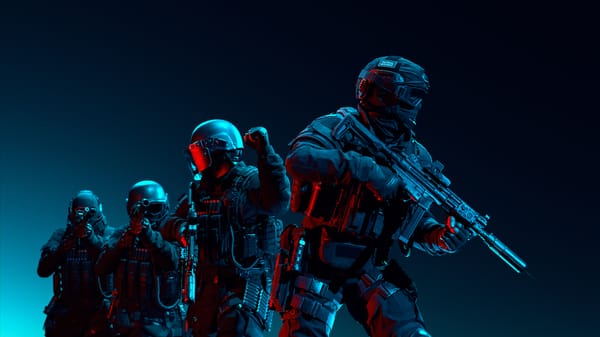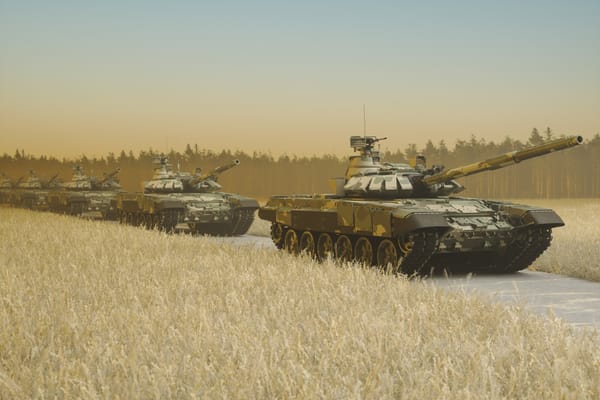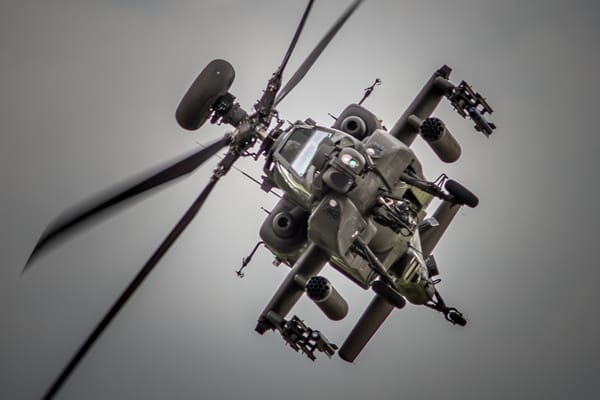🇷🇺 Russia's Grand Strategy

In an era marked by geopolitical turbulence, shifting alliances, and rapid technological change, Russia has embarked on a comprehensive Grand Strategy aimed at reasserting its influence on the world stage over the next 10–20 years. This strategy is designed not only to safeguard its sovereignty and national interests but also to challenge Western dominance and promote a multipolar global order. By integrating diplomatic, informational, military, and economic instruments, Moscow’s blueprint seeks to secure its long-term survival and prosperity. This article explores Russia’s Grand Strategy in detail by examining its vision and national interests, core strategic objectives, the national context through a SWOT analysis, key instruments of power, regional focus, strategic partnerships, resource allocation, phased timing and sequencing, and the domestic implications for societal cohesion.
Vision & National Interest
At the core of Russia’s Grand Strategy is a resolute vision: to restore Russia as a preeminent global power that commands respect and exerts influence over its near abroad and beyond. The Kremlin envisions a world where a multipolar order replaces Western hegemony—a system in which Russian values, traditions, and strategic interests are integral components of global governance.
Defining National Interests
Russia’s national interests, which underpin its Grand Strategy, are multifaceted and deeply rooted in its historical, cultural, and geopolitical experiences. They include:
• Preservation of Sovereignty: Maintaining full control over its political and territorial integrity, particularly in the face of perceived Western encroachment and internal instability.
• Restoration of Great Power Status: Re-establishing itself as a major global actor by leveraging its historical legacy, vast natural resources, and military capabilities.
• Security and Stability: Ensuring national security against external threats—ranging from NATO expansion to cyber-attacks and terrorism—while promoting stability in its near abroad.
• Economic Independence and Modernization: Reducing reliance on energy exports by diversifying its economy, modernizing key industries, and enhancing technological capabilities.
• Cultural and Ideological Influence: Promoting traditional Russian values and a narrative of national pride to consolidate domestic unity and bolster its soft power abroad.
By aligning these national interests with its long-term vision, Russia’s Grand Strategy is poised to confront external pressures and internal challenges alike.
Core Strategic Objectives
Russia’s strategic objectives serve as the pillars of its comprehensive approach, delineating clear goals across various domains. These objectives are designed to navigate the complexities of modern geopolitics and ensure the country’s continued influence.
1. Reasserting Regional Dominance:
• Spheres of Influence: Reinforce control over its near abroad—including the former Soviet republics, Eastern Europe, and Central Asia—to create a buffer zone against potential threats.
• Hybrid and Asymmetric Warfare: Utilize a blend of conventional military force and hybrid tactics (information warfare, cyber operations, covert actions) to influence regional outcomes without full-scale conflict.
2. Modernizing and Strengthening Military Capabilities:
• Force Modernization: Upgrade military hardware, develop advanced cyber, space, and electronic warfare capabilities, and maintain a credible nuclear deterrent.
• Strategic Posture: Enhance rapid deployment, improve logistical networks, and fortify critical defense installations to deter adversaries.
3. Economic Diversification and Technological Advancement:
• Modernization of the Economy: Invest in technological innovation, diversify away from heavy reliance on energy exports, and foster new industries such as digital technology, robotics, and green energy.
• Infrastructure and Industrial Policy: Develop critical infrastructure projects and public-private partnerships to stimulate domestic growth and counter the impact of Western sanctions.
4. Diplomatic and Ideological Outreach:
• Multipolar World Advocacy: Champion a global order that diminishes Western dominance by fostering alliances with like-minded states and promoting alternative governance models.
• Cultural Diplomacy: Leverage Russia’s rich cultural heritage, historical narratives, and media channels to shape international perceptions and cultivate global sympathies.
5. Energy and Resource Leverage:
• Energy Diplomacy: Use its vast natural resources—oil, gas, and minerals—as strategic tools to forge economic partnerships, exert geopolitical influence, and secure long-term revenue streams.
• Regional Energy Projects: Expand energy infrastructure, such as pipelines and LNG terminals, to deepen ties with key consumers in Europe and Asia.
National Context: Global and Regional Threats and Opportunities
Understanding Russia’s grand strategy requires an analysis of its external environment. A SWOT analysis offers insight into the strengths, weaknesses, opportunities, and threats that define its national context.
SWOT Analysis
Strengths:
• Natural Resource Wealth: Russia commands some of the largest reserves of oil, gas, and minerals in the world, providing it with significant leverage in global energy markets.
• Military Capabilities: With a formidable nuclear arsenal and a modernizing conventional military, Russia maintains a potent deterrence and the capacity for power projection.
• Geopolitical Geography: Strategically positioned between Europe and Asia, Russia serves as a critical bridge and buffer zone, enhancing its influence over its near abroad.
• Historical and Cultural Influence: A deep-rooted cultural heritage and a narrative of resilience underpin Russia’s soft power and national identity.
Weaknesses:
• Economic Dependence on Energy Exports: Heavy reliance on fossil fuels makes the economy vulnerable to price fluctuations and international sanctions.
• Demographic Decline: Population aging and low birth rates pose long-term challenges to labor markets, economic growth, and military recruitment.
• Institutional Inefficiencies: Corruption, bureaucratic inertia, and outdated economic policies undermine the nation’s ability to implement reforms.
• Technological Lag: Compared to Western competitors, Russia faces challenges in modernizing key technological sectors, particularly in digital innovation and advanced manufacturing.
Opportunities:
• Emerging Markets and Eurasian Integration: Deepening economic and political integration with Asian economies, BRICS nations, and regional organizations like the Eurasian Economic Union can mitigate Western isolation.
• Technological Investments: Focused investment in technology and innovation can spur modernization, reduce energy dependency, and enhance national security.
• Shifts in Global Power: The gradual erosion of Western unipolarity provides Russia with the opportunity to advocate for a multipolar world order that better reflects its interests.
• Climate Change Mitigation: Initiatives in environmental management and renewable energy present avenues for economic diversification and sustainable development.
Threats:
• Western Sanctions and Isolation: Continued economic sanctions and diplomatic isolation imposed by the West can stifle growth and limit access to advanced technologies.
• NATO Expansion: The encroachment of NATO along Russia’s borders is perceived as a direct threat to national security and regional stability.
• Cyber and Information Warfare: Vulnerabilities in cybersecurity expose Russia to potential espionage, sabotage, and destabilization campaigns by adversaries.
• Internal Social and Economic Discontent: Rising inequality, regional disparities, and public dissatisfaction with corruption can erode domestic stability.
This SWOT analysis underscores the need for a nuanced, adaptive strategy that capitalizes on Russia’s inherent strengths and opportunities while mitigating vulnerabilities and countering external threats.
Instruments: Leveraging the DIME Framework
To execute its Grand Strategy effectively, Russia employs a suite of instruments aligned with the DIME framework—Diplomatic, Informational, Military, and Economic tools. Each element is strategically deployed to advance its national interests.
Diplomatic Tools
Russia’s diplomatic approach is multifaceted, aiming to reshape international institutions and forge alliances that counterbalance Western influence.
• Multilateral Engagement: Russia actively participates in organizations such as the Shanghai Cooperation Organization (SCO), BRICS, and the Eurasian Economic Union to promote a multipolar world order.
• Bilateral Outreach: Strategic bilateral engagements with nations like China, India, Iran, and Turkey provide avenues for deep economic, military, and technological cooperation.
• Regional Mediation: Russia positions itself as a mediator in regional conflicts—such as in Syria, Ukraine, and the Caucasus—leveraging its influence to shape outcomes in its favor.
Informational Tools
Information operations and strategic communication are cornerstones of Russia’s strategy, aimed at shaping both domestic and international narratives.
• State-Controlled Media: Outlets such as RT and Sputnik disseminate narratives that emphasize Russian resilience, cultural pride, and criticism of Western policies.
• Cyber Operations: Advanced cyber capabilities enable Russia to conduct both defensive and offensive operations, safeguarding critical infrastructure while engaging in hybrid warfare.
• Propaganda and Disinformation: Coordinated campaigns seek to undermine the credibility of Western institutions and influence public opinion in target countries.
Military Tools
Russia’s military modernization and strategic use of force are pivotal to its grand strategy.
• Force Modernization: Investment in next-generation weaponry, including hypersonic missiles, advanced air defense systems, and unmanned systems, ensures operational superiority.
• Nuclear Deterrence: Maintaining a robust nuclear arsenal is central to Russia’s security doctrine, serving as a powerful deterrent against potential adversaries.
• Hybrid Warfare: A combination of conventional military operations, special forces, and non-military tactics—such as cyber-attacks and covert operations—allows for flexible responses to diverse challenges.
• Force Projection: Enhanced mobility, rapid deployment capabilities, and military exercises in key regions demonstrate Russia’s readiness to act in its interests.
Economic Tools
Economic instruments are vital in sustaining Russia’s grand strategy, particularly in countering the effects of Western sanctions and stimulating domestic growth.
• Energy Diplomacy: Utilizing its vast reserves of oil and gas, Russia secures strategic partnerships and exerts geopolitical influence through long-term energy contracts and pipeline projects.
• Investment in Key Industries: State-led initiatives aim to modernize critical sectors, diversify the economy, and reduce dependence on fossil fuels. These include investments in technology, manufacturing, and renewable energy.
• Economic Sanctions Countermeasures: By developing alternative financial systems, enhancing trade links with non-Western countries, and fostering domestic innovation, Russia seeks to insulate its economy from external pressures.
• Public-Private Partnerships: Collaboration between the state and private enterprises fosters innovation and mobilizes resources to implement large-scale infrastructure and industrial projects.
Regional Focus
Russia’s Grand Strategy incorporates a targeted regional focus, with distinct priorities in various geographical areas where it seeks to exert influence and secure its interests.
Near Abroad and Eastern Europe
• Sphere of Influence: Reasserting dominance over the post-Soviet space remains a central pillar. Moscow aims to maintain political and economic leverage over former Soviet republics and counter Western integration efforts.
• Buffer Zones: Stabilizing and integrating neighboring regions provides a security buffer against NATO expansion and other perceived external threats.
• Ethnic and Cultural Ties: Leveraging historical and cultural connections helps Russia justify its involvement and influence in these areas.
Central Asia and the Caucasus
• Economic Integration: Strengthening ties with Central Asian states through energy projects, infrastructure investments, and economic cooperation under the Eurasian Economic Union framework.
• Security Cooperation: Engaging in joint security initiatives to counter extremist threats and maintain regional stability in the volatile Caucasus region.
• Resource Management: Access to natural resources and strategic transit routes in these regions enhances Russia’s energy and trade capabilities.
Middle East and Africa
• Strategic Partnerships: In regions such as the Middle East, Russia has forged alliances with governments in Syria, Iran, and Turkey to secure military footholds and influence regional dynamics.
• Resource and Energy Interests: Expanding economic and energy ties in Africa helps diversify markets and counterbalance Western economic influence.
• Counterterrorism: Cooperative security measures and military engagements in these regions aim to combat terrorism and safeguard Russian interests.
Asia-Pacific
• Balancing Chinese Influence: While increasingly partnering with China, Russia also seeks to maintain strategic autonomy in the Asia-Pacific, ensuring that its interests are not subsumed by any single regional power.
• Economic Opportunities: Strengthening trade and investment links with emerging Asian economies offers avenues for economic diversification and growth.
Strategic Partnerships
A robust network of strategic partnerships is critical to Russia’s Grand Strategy. These relationships are forged both through formal alliances and flexible bilateral and multilateral arrangements.
Alliances
• Collective Security Treaty Organization (CSTO): Russia plays a leading role in this regional defense alliance, which provides a security umbrella over several former Soviet states.
• Bilateral Defense Agreements: Strategic military cooperation with countries such as China and India, despite occasional divergences, serves as a counterweight to Western alliances.
Key Bilateral Relations
• China: Perhaps Russia’s most significant partner, the Sino-Russian relationship is based on mutual strategic interests in counterbalancing U.S. influence, coordinating economic policies, and expanding military cooperation.
• Iran: Shared interests in the Middle East, particularly in opposing Western interventions, have cemented a close partnership with Iran, spanning military, economic, and technological domains.
• Turkey and India: Both nations, while complex in their relationships with Russia, represent important partners in trade, defense, and regional security.
Multilateral Engagement
• BRICS and the SCO: Active participation in these multilateral organizations allows Russia to amplify its voice in global governance and develop collective responses to international challenges.
• Global Governance Initiatives: Through involvement in various international forums, Russia seeks to reform global institutions and promote policies that reflect its interests and values.
Resource Allocation
Implementing Russia’s Grand Strategy requires judicious allocation of economic, military, and human capital resources. Moscow prioritizes strategic investments that enhance its long-term capabilities and resilience.
Defense Budget Allocation
• Military Modernization: A significant portion of the defense budget is devoted to modernizing military equipment, developing advanced cyber and space warfare capabilities, and maintaining a credible nuclear deterrent.
• Global Readiness: Investments in rapid deployment, strategic logistics, and force projection are critical to ensuring that Russia can respond swiftly to emerging challenges.
• Research and Development: Funding for R&D in defense technology fosters innovation and sustains Russia’s technological edge in critical areas.
Investment in Key Industries
• Energy Sector: Continued investment in oil and gas infrastructure—while gradually diversifying energy sources—ensures that energy remains a potent instrument of geopolitical influence.
• Technological Innovation: Initiatives to bolster digital technology, robotics, renewable energy, and advanced manufacturing are essential to reducing economic vulnerabilities.
• Infrastructure and Public-Private Partnerships: Upgrading domestic infrastructure and fostering cooperation between the state and private enterprises drive industrial mobilization and economic modernization.
Economic Reforms and Policies
• Sanctions Countermeasures: Developing alternative financial networks and strengthening trade relationships with non-Western markets are central to mitigating the impact of Western sanctions.
• Fiscal Prudence and Investment: Balancing defense spending with investments in education, healthcare, and regional development fosters both economic resilience and social stability.
• Workforce Development: Enhancing education and vocational training programs ensures that the workforce is equipped for a modern, technology-driven economy.
Timing and Sequence
The success of Russia’s Grand Strategy hinges on a phased approach that prioritizes initiatives based on urgency, feasibility, and long-term impact. This timeline is divided into three phases: short-term, medium-term, and long-term.
Short-Term (0–5 Years)
• Security Enhancements:
Immediate actions include reinforcing military readiness through rapid modernization programs, bolstering cyber defenses, and intensifying hybrid warfare capabilities to deter NATO expansion and other immediate threats.
• Consolidation in the Near Abroad:
Russia will focus on reasserting control and influence over its traditional spheres of influence in Eastern Europe, Central Asia, and the Caucasus, using both military and diplomatic channels to counteract Western encroachment.
• Stabilizing the Economy:
Short-term economic measures will target the adverse effects of Western sanctions through strategic partnerships, energy diplomacy, and efforts to diversify the economy while ensuring social stability.
Medium-Term (5–10 Years)
• Economic Modernization:
In this phase, Russia will prioritize structural economic reforms, increased investments in technology and innovation, and the development of alternative financial systems. Deepening integration with Eurasian and Asian economies will be key to reducing Western dependency.
• Deepening Strategic Partnerships:
Strengthening and expanding alliances with China, Iran, and other non-Western states will solidify Russia’s geopolitical position. Enhanced military exercises, joint technological projects, and coordinated diplomatic initiatives will be pursued.
• Military and Cyber Upgrades:
Continued modernization of the armed forces, combined with advances in cyber, space, and electronic warfare capabilities, will be implemented to ensure long-term strategic deterrence and operational flexibility.
Long-Term (10–20 Years)
• Achieving Strategic Autonomy:
Over the long run, Russia aims to realize a state of strategic autonomy where its military, economic, and political systems are resilient enough to withstand external pressures. This includes full integration of modern technologies and a sustainable model of economic development.
• Global Multipolarity:
The long-term vision is to foster a global order that diminishes Western hegemony and embraces a multipolar system—where Russia’s voice is not only heard but shapes international norms and governance.
• Socioeconomic Transformation:
Structural reforms in education, healthcare, and social welfare will be pursued to reverse demographic decline, promote innovation, and ensure that prosperity is broadly shared among the populace.
Domestic Implications and Societal Cohesion
The effectiveness of Russia’s Grand Strategy is inextricably linked to its domestic resilience. The Kremlin recognizes that long-term success depends on maintaining internal stability, unifying the populace, and ensuring that foreign policy objectives align with domestic priorities.
• Balancing Security and Civil Liberties:
As Russia enhances its security apparatus to counter external threats, it must simultaneously safeguard individual freedoms and prevent excessive governmental overreach that could fuel dissent.
• Investment in Education, Healthcare, and Infrastructure:
Robust investments in human capital and public infrastructure are essential for long-term socioeconomic development. Modernizing education systems, expanding healthcare services, and upgrading transportation and digital networks will not only support economic growth but also bridge regional disparities.
• Integration of Marginalized Communities:
Policies aimed at reducing inequality and integrating marginalized groups will help foster a cohesive national identity. By promoting regional development and ensuring that the benefits of modernization reach all strata of society, the government can reinforce social stability.
• National Identity and Cultural Revival:
Emphasizing Russia’s historical legacy, cultural achievements, and traditional values is central to forging a unifying national narrative. Through state-supported media, cultural initiatives, and public ceremonies, Russia seeks to cultivate a sense of pride and collective purpose that underpins its grand strategy.
Conclusion
Russia’s Grand Strategy represents a multifaceted blueprint for reasserting its influence in an increasingly complex global environment. Anchored by a vision of restored great power status and a commitment to a multipolar world order, the strategy is built on a foundation of clearly defined national interests and core strategic objectives. These include reestablishing regional dominance, modernizing military capabilities, diversifying the economy, and leveraging energy resources as instruments of power.
In the face of a challenging national context—marked by Western sanctions, demographic decline, and technological gaps—Russia is actively deploying a range of instruments through the DIME framework. Diplomatic outreach, strategic information operations, military modernization, and economic diversification are all being calibrated to meet the dual imperatives of national security and long-term prosperity.
A focused regional strategy underscores the importance of reasserting influence in the near abroad, Central Asia, the Caucasus, and beyond, while robust strategic partnerships with key allies such as China and Iran serve to offset Western pressures. Meanwhile, targeted resource allocation in defense, industry, and public infrastructure aims to mitigate vulnerabilities and foster sustainable growth.
The phased implementation—divided into short-term, medium-term, and long-term initiatives—ensures adaptive flexibility. In the immediate future, Russia will concentrate on enhancing security and stabilizing its economy. Medium-term plans call for deeper strategic partnerships and economic modernization, while long-term goals include achieving strategic autonomy, fostering global multipolarity, and ensuring socioeconomic transformation.
Ultimately, Russia’s Grand Strategy is as much about securing its external geopolitical interests as it is about reinforcing internal cohesion. By balancing national security imperatives with domestic priorities—investing in education, healthcare, and cultural revival—the Kremlin seeks to forge a resilient, unified society capable of supporting its ambitious international agenda.
In summary, Russia’s comprehensive approach to its Grand Strategy reflects a deep understanding of both the opportunities and challenges of the modern global landscape. Through a careful interplay of military strength, economic leverage, diplomatic maneuvering, and ideological influence, Russia aspires to reassert its role as a major global actor, shape the future international order, and secure a legacy of power and resilience for decades to come.





